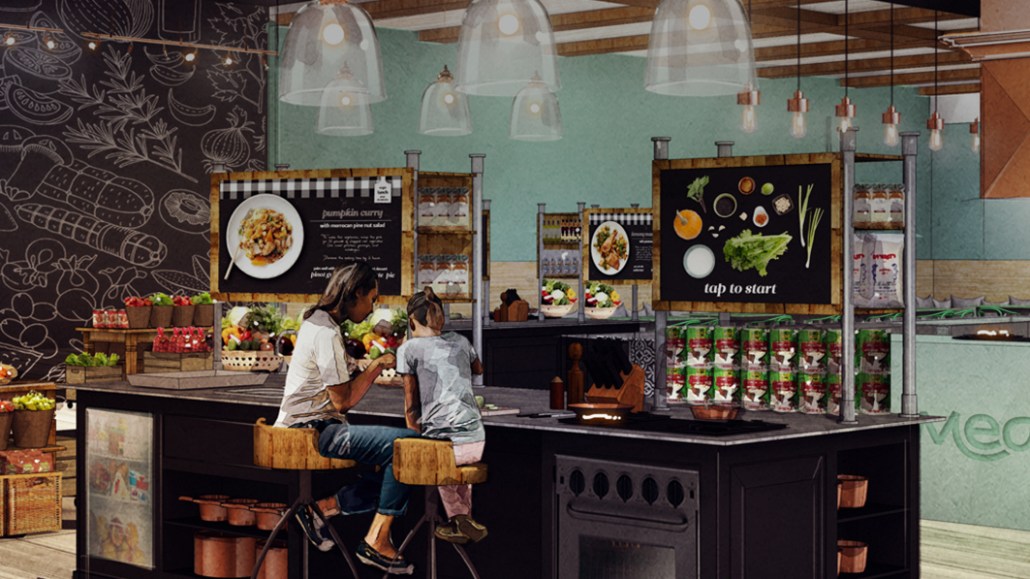With fewer cash registers, Hershey tries to re-create the impulse buy online

The rise of self-checkouts at supermarkets and convenience stores has led to a drastic decrease in the unplanned purchases that are crucial to Hershey’s sales. As a result, the maker of Reese’s Peanut Butter Cups and Almond Joy chocolate bars is trying to trigger impulse candy sales online.
Most candy-buying decisions are made in the aisles rather than at registers. But people still grab sweets while waiting in line for the cashier, so the dwindling number of cash registers means Hershey is missing a chance to nudge consumers into last-minute purchases, said Brian Kavanagh, senior director of retail evolution for Hershey. Purchases used to be all made at the main cash register, but now 60 percent are done at self-checkouts and another 10-15 percent are done through mobile devices, he said.
E-commerce is a single-digit yet growing business for Hershey, according to its quarterly earnings report in July. Re-creating that unplanned purchase online is not easy. While most online shopping today starts with search, people tend not to intentionally search for candy, Kavanagh said.
The idea is to use new technologies like virtual reality to make shopping interesting, he said. Hershey just started doing a test at its innovation center with an online retailer, which Hershey declined to name, where people put on the HTC Vive VR headset and see different brands and product categories in everyday environments like a living room — based on the idea that shopping can be done anywhere. When viewers click on a brand or a product category, they see snack options like a bottled tea and a Reese’s peanut butter cup.
Kavanagh envisions the possibility of a retailer’s shopping app giving users the option of shopping through a virtual experience. The user could then put on VR goggles, walk around a fake retail environment and shop — increasing the chances of them stumbling on products like Hershey candy that they wouldn’t have intentionally searched for.
Michael Rucker, co-founder of VR ad platform OmniVirt, said that VR has potential for retailers. With VR, shoppers can try new products that may not be in stock at the store. The retailer can see if a consumer looked at the blue shoes or the black shoes, and on average how long the person needed to look at those shoes before they decided to purchase them, for instance.
“There is a tremendous amount of data captured through VR, so the opportunity for VR in retail is huge,” said Rucker.
But for the time being, VR seems to be more hype than reality because the consumer adoption rate is low and the cost for brands to develop an immersive VR experience would be high.
Beyond VR, Kavanagh’s team recently worked with an unnamed grocery chain to create a seasonal aisle on its website. So instead of searching for products on the chain’s website, visitors could browse an online aisle that was organized by theme, such as Easter, and because there were no physical limitations, refrigerated and shelf-stable items could sit side by side. The result was that shoppers discovered items they wouldn’t have necessarily searched for and basket size was three times higher than usual, translating to more sales, according to Kavanagh.
Kavanagh’s team also plans to do tests with retailers who send digital reminders to people who order on mobile and pick up in-store. For instance, if a person orders something through a retailer’s app, at checkout the app will send the person a reminder, asking if they want to add items that they’ve bought before.
While digital is important, Hershey will continue working with retailers to make candy aisles in physical stores more tempting. The company’s tests show that aisles with eye-catching designs get people to buy more candy that wasn’t on their shopping lists, Kavanagh said.
“We don’t want to leave the physical world because brick-and-mortar retail is not dead, and we cannot afford to lose more consumers,” he said. “We are working hard with our retailers to make the same 60-foot aisle fun and engaging.”
Image courtesy of Hershey
More in Marketing

How the MAHA movement influenced food and beverage brands in 2025
The MAHA movement has come to stand for different things in different people’s eyes, depending on which initiatives they most closely follow.

Why Georgia-Pacific is turning its programmatic scrutinty to the sell side
The company is turning its attention to the sell side, zeroing in on the ad tech firms that move inventory for publishers — the supply-side platforms.

Future of Marketing Briefing: Why ‘just good enough’ is generative AI’s real threat to marketers
When characters and mascots are allowed to live inside generative systems, they stop being event-based and start becoming environmental.







